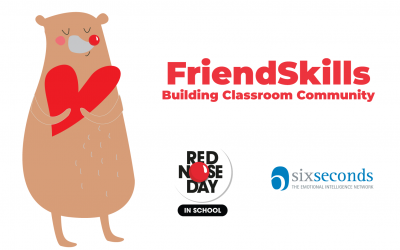What Is a Growth Mindset?
We all have beliefs about our own abilities and potential. These beliefs are part of ourmindset, which helps determine the actions we take – or don’t take – as we go through life.
A growth mindset is the belief that our intelligence and abilities can be improved with effort and the right strategies.
A fixed mindset, on the other hand, is the belief that our intelligence and abilities are more or less stable and unchangeable.
You can probably already intuit the huge ramifications of these two mindsets – for children and adults. In terms of motivation and success, it’s a critical factor.
Here are 9 ways to introduce and instill a growth mindset in kids:
1. Teach about the brain and how it works.Once kids understand that the brain literally grows new connections as they practice and learn how to do something, they get excited about the learning process.
I remember telling a kid I work with about this when he felt frustrated by his basketball abilities.At first I hesitated because I thought it may be over his head, and I didn’t really understand how it worksall that well.But I went ahead and told him that as he practices, his brain is rewiring itself and forming new connections that make it easier the next time. And guess what? His eyes lit up!
And later, I heard him excitedly telling his mom about his brain’s rewiring capabilities!
When kids learn how their brains work and grow, they take the first steps of developing a growth mindset.

2. Introduce the concept of the two mindsets.When you teach the basic differences of growth and fixed mindsets, kids can start to recognizing them – in story characters, others and even themselves.
For younger kids, start with these adorable videos from Sesame Street and Mojo:
Another great way to introduce these concepts is by reading books. There’s a list of amazing growth mindset books for all ages below.
3. Model a growth mindset for them.No matter what you tell children, the best way to teach a growth mindset is to work on developing your own. After all,孩子们学习他们的行为和态度的from observing the adults in their lives.One effective way to do this is to let your kids overhear your thinkingout loudwhen you go through challenges.
Instead of…. “This is too hard.” Say… “This is really hard for me. I guess I better keep practicing.”
Instead of… “I can’t do this.” Go with… “I haven’t learned how to do this yet.”
Those are just two of countless examples of how to have and model a growth mindset. The best way to instill a growth mindset in your children is to have a growth mindset yourself.

4. Show your struggles.It’s hard to model a growth mindset, though, if you always try to hide your mistakes from your children. It’s a natural tendency since we want to protect them. But in this case, showing your struggles can be a lifelong gift to your children.
So try talking about your mistakes – even parenting mistakes – and what you’ve learned from them. One characteristic of a growth mindset is viewing failure as a springboard for growth. When children see our failures and hear us working through them – using them as a springboard for growth – they will be better equipped to do the same.
5. Add the magical word.
Ican’tread.Ican’tmake any 3 pointers.Ican’tride a bike.
It’s heartbreaking to hear a kid mutter phrases like these – sad and frustrated. But it’s a golden opportunity to teach about a growth mindset – with one simple trick.
Teach your child to add the magical wordyetto the end of those sentences.
I can’t read YET.I can’t make any 3 pointers YET.I can’t ride a bike YET.
Just one word drastically changes the meaning of the phrase – and the outlook moving forward!
6. Praise effort over outcome.The key to instilling a growth mindset is teaching kids that their brains are like muscles that can be strengthened through hard work and persistence. To reinforce that as parents, it’s important to praise effort over outcome.Here’s an example:
Instead of praising your child for a seemingly permanent characteristic (“You are so smart”), praise the effort they put into it (“You worked really hard to solve that problem.”) The first is known as people praise; the second is process praise. Process praise promotes an internal sense of self-efficacy because it reinforces that successes are due to effort (which the child can control) rather than some fixed level of talent or skill.
这个研究是惊人的。Carol Dweck,Stanford University professor who first defined fixed and growth mindsets, wanted to know if what type of praise parents used had an effect on their kids as they grew up. In collaboration with researchers from the University of Chicago, Dweck looked athow mothers praised their babiesat one, two, and three years old. Then they checked back with them five years later. “We found that process praise predicted the child’s success in school and desire for challenge five years later,” she told Quartz. “The more they had a growth mindset in 2nd grade the better they did in 4th grade and the relationship was significant. It’s powerful.”
Praise effort over outcome.
7. Avoid labeling your child and others.Whether it’s a positive label (You are so smart!) or a negative one (He’s not very good at math), they both communicate a fixed mindset.
Instead of motivating kids, labels like these can lead to limiting beliefs about themselves and others.
有时一个小改变我们使用的语言中,like adding yet – can drastically change a phrase’s meaning and a kid’s worldview.

8. Replace negative self-talk with these phrases.
Talk to your kids about their “inner voice” and the concept of self-talk, both positive and negative.
Teach them to recognize unhelpful self-talk and replace it with positive alternatives. To the right, see a short list of examples:
This is too hard…This may take more time and effort.
I can’t do Math…I am going to train my brain to do Math.
I suck at basketball…I am not as good at basketball yet as I want to be.
I’m awesome at this…I have learned how to do this.
9. Read these books for your kids.Stories are an amazing way to learn about a growth mindset and see it in action.Here’s a list of amazing books related to growth mindsets, broken down by age:
- Bubble Gum Brain by Julia Cook
- Thanks for the Feedback, I Think by Julia Cook
- I Knew You Could: A Book for All Stops in Your Life by Craig Dorfman
- Making a Splash – Growth Mindset for Kids by Carol Reiley
- Your Fantastic Elastic Brain: Stretch It, Shape It By JoAnn Deak
- A Walk in the Rain with a Brain by Edward Hallowell
- My Day Is Ruined! A Story Teaching Flexible Thinking by Bryan Smith
- Sometimes You Win, Sometimes You Learn for Kids by John C. Maxwell
- When Pigs Fly by Valerie Coulman
- Rosie Revere, Engineer by Andrea Beaty


Fill in this form and your Pop-Up Mini Kit will be emailed in seconds
What's new in emotional intelligence?
The Motivation Iceberg: 3 Tips to Unleash Motivation
How do you use emotional intelligence to fuel lasting motivation? The Motivation Iceberg is a simple, clear model for understanding how to motivate – even in WFH during a pandemic.
The Myth of Winning: 3 Steps to Stand Together as Allies
Here’s why we make the boss, a colleague, a customer, spouses and lovers, and even our children into enemies — and a better way. It starts with our brains, and being addicted to the pleasure of righteousness.
Youth for Youth – Celebrating Emotional Intelligence – IGNITE POP-UP Festivals in Saudi
What happens when you empower youth to facilitate emotional intelligence to youth? Here’s what happened when Ignite / Doroob (a Six Seconds partner) taught children the skills to bring emotional intelligence experiences to other children
Structuring Transformational Learning
For you, is learning about collecting knowledge… or about using it to create change? Our learning programs are lifechanging because we work WITH the brain and structure learning to fuel growth – here’s how.
Free Friendship and Empathy Kit from Red Nose Day & Six Seconds
In a time where so many children feel disconnected and alone, it’s time to share skills for being and making friends!
How Do You Want Your Students to Feel? Emotional Intelligence Tips for Teaching
Learning is both an emotional and rational process. How do we blend the two? Here is a map teachers and trainers can use to bring head and heart together in learning.
- 7 Amazing Facts About Emotions You Should Know- August 19, 2022
- The Great Practice Myth: Debunking the 10,000 Hour Rule- June 20, 2022
- Emotional Intelligence at Work: January 2022- January 21, 2022









I look forward to using these tools as I grow my EQ competence. Great stuff, thank you!
I would like to use your emotional wheel diagram in my book – Think Like a Leader and be successful. Please accord permission to do so, I have put a reference in my book and a citation too. Book is not published yet.
Meegwetch, Merci, Thank you )i(
Hi, I am a psychologist practicing in India. Wanted to know if there is any course or workshop for application of EQ in parenting.
我是一个注册mindfulness instructor that emphasizes work with children and their parents. I see your information on EQ “cohabitating” seamlessly with what I present in mindfulness. Has there been any research done regarding this?
I look forward to using your information on growth mindset.
Thanks you,
Kim
Hi Kim! I think EQ and mindfulness are completely interwoven. In fact, the first part of our EQ Model is ‘Know Yourself’, which is all about increasing self awareness through mindfulness around emotions and behaviors. On the other hand, we choose where we direct our attention while practicing mindfulness. It’s quite possible (and I’ve heard many meditation practitioners say) that this attention could be directed to all sorts of areas besides our emotions (body, thoughts, spirituality, breath, etc). What do you think? Do you aim to bring mindful awareness to children’s emotions?
Thank you.
No problem, Patricia. Thank you!
I am in the process of getting involved with primary schools in my area. I am passionate about developing EQ in schools.
Hi Philip, that’s wonderful! Where are you based? We have some network members doing amazing work getting EQ development in schools, and I’d be happy to put you in touch
I am an educational consultant working with the schools and the community to build EQ awareness and importance. Thank you for this informative article and valuable your work in developing EQ in children and families.
Very valuable article and practice tools which can be beneficial for helping parents and teachers assist children to develop confidence while learning how developing a growth mindset can help them improve their learning skills.
Hi Phillipa! Glad you appreciated the article. It is definitely valuable, important work!
Can the same be practiced with those who have intellectual disabilities? Will there indeed be growth. I’ve tried to find some research about it and would really appreciate any leads you could point me towards.
Many thanks.
Hello, please let me know how to learn more about the emotional Intelligence for kids.
Regards
Heyam
Hi Heyam, thanks for your interest. May Duong is the Director of Parent Education at Six Seconds, and an expert on kids and EQ. I’d recommend reaching out to her to learn more:[email protected]. If you want practical ways to teach EQ to kids, I would also check out the Mini Pop-Up Kits here:https://staging.6seconds.org/ucd/boxes/